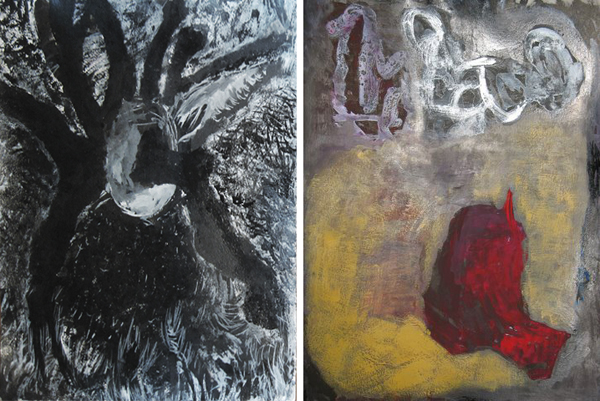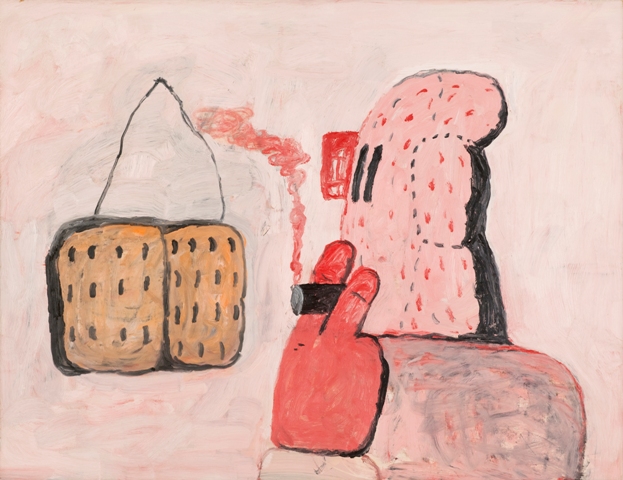
David Smith. Untitled, 1959. Black egg ink on paper. The Phillips Collection, gift of Linda Lichtenberg Kaplan, 2004. © Estate of David Smith/Licensed by VAGA, New York, NY
David Smith often used his drawings, paintings, and photography as a counterpoint to the relatively slow, laborious process of making welded sculpture. After a full day of sculpting at his studio near Lake George, New York, he would relax by taking a shower and spend the evening drawing; in the 1950s, he was making between 300 and 400 drawings a year. In an article in Arts Magazine in 1960, Smith wrote about the joy of making a drawing each day. He made the following annotations on a photograph of his living room floor filled with ink drawings: “Sometimes I draw for days I like it and it’s a balance with the labor of sculpture…to average a drawing for every day I live some form of identity.”
Intrigued by reading that David Smith had invented his own medium by adding an egg yolk to ink, I decided to try it myself. I put an egg yolk in a plastic container and mixed it with black Chinese ink. When I dipped a brush into the mixture, it was thick and creamy. The oil in the egg yolk added a surprising amount of density to the ink and a slight gloss. I experimented with five drawings on watercolor paper, adding white gouache on top of the black ink in a few of the pieces.

Two works by Librarian Karen Schneider using egg yolk mixed with Chinese ink, with other media, on watercolor paper.
The egg ink had a sensuous quality and flowed easily from the brush onto textured watercolor paper. To use it as David Smith did in his large, calligraphic drawings required decisiveness and a bold physicality. I came away from the experiment with a new appreciation of what it took to create Smith’s powerful drawings, informed by daily practice that led to a seemingly effortless fluidity of expression.
Karen Schneider, Librarian


